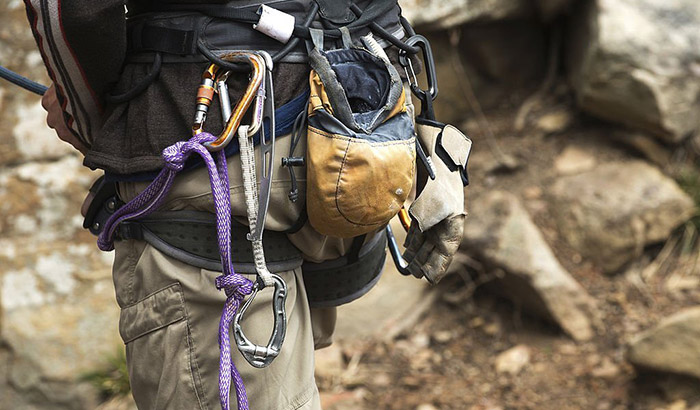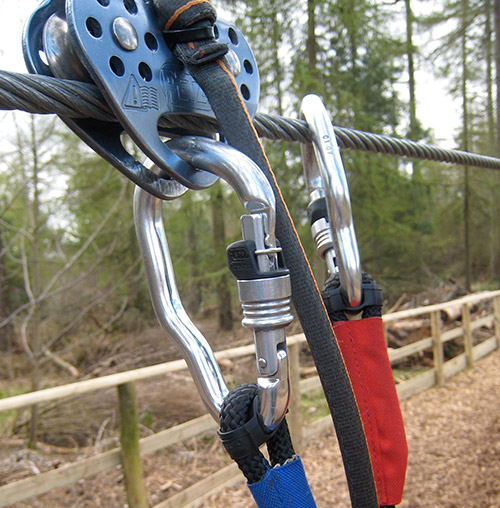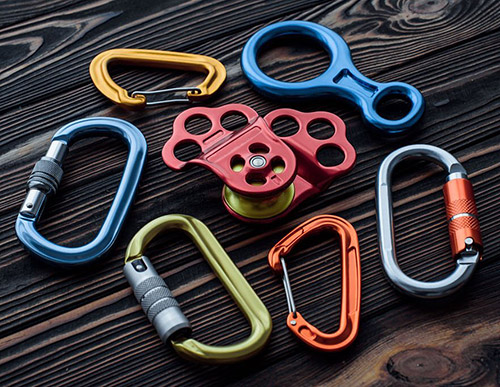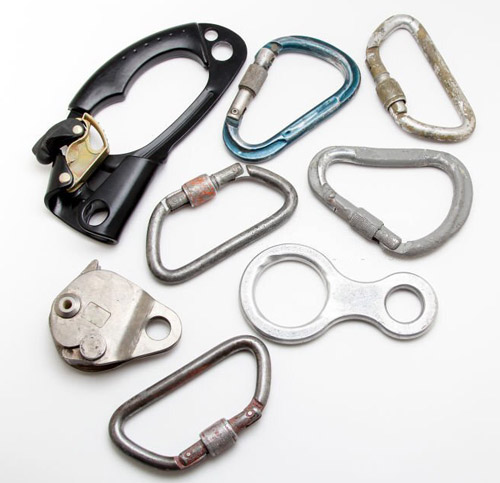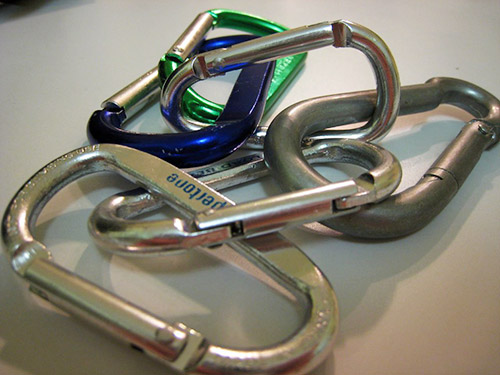A carabiner is essential in keeping a climber safe in every climbing session. It can connect various climbing equipment pieces and perform various tasks, including attaching a climber to a rope, a belay anchor, and a rope for rappelling. However, please note that different types of carabiners come with specific purposes.
So, what are the types of climbing carabiners? A climbing carabiner can be grouped according to its type of lock, shape, and gate type. All of this carabiner classification will be discussed in this article.
Contents
Locking and Non-locking Carabiners
As a general classification, you can group different types of carabiners according to the type of locking systems: locking and non-locking carabiners. A locking carabiner comes with a locking mechanism that will let a user unlock the carabiner before it can be opened.
This locking carabiner can also be segregated into two groups: the auto-lock or twist-lock carabiner and the manual locking carabiner. Based on its name alone, auto-locking carabiners can easily open with one hand because of their auto-locking features.
On the other hand, a non-locking carabiner is the complete opposite of a locking carabiner. In fact, a non-locking carabiner can be easily opened when the users apply some type of pressure to the gate to make it open.
Carabiner Types According to Shape
There are different types of carabiners according to their shape. The classifications include asymmetric D, pearl, and D shape carabiners. Please read below for more information:
D-shaped carabiners
The D-shaped carabiners are perfect for different types of climbing. It has the ability to hold loads off the center into the stronger or non-gated side. So, this situation means that a smaller or even lighter D-carabiner has basically the same strength as the oval. The upside of this carabiner is it’s stronger and comes with a larger gate, but it’s costly.
Asymmetric D-shaped Carabiners
Also known as offset D or modified carabiners, asymmetric d-shaped carabiners are considered the most popular designs in all carabiners. This carabiner works similarly to the D-shaped one but is smaller on one end to minimize the weight.
This type of gate comes with a large opening compared to the regular D-shaped carabiner. This feature will make the carabiner easier to clip. The only issue with this carabiner is it needs more room compared to the D-shaped carabiners.
Pear-shaped Carabiners
Pear-shaped carabiners are slightly similar to the asymmetric d-shaped in terms of design. However, this type of carabiner is built for other purposes, as it is primarily used for rappelling and belaying. This type of climbing also works at anchor points for multi-pitch climbing or top-roping. Pear-shaped carabiners are also called HMS or HMS on the spine carabiners.
Oval Carabiners
The oval carabiners have the original design in all of the carabiners. It’s versatile, affordable, and has smoothness with similar top or bottom curves that limit load shifting. This type of carabiner also offers more capacity to hold gears and can be used for carabiner brake rappels.
The downside of this carabiner is the lack of strength. But still, this carabiner is perfect for aid climbing as the center loads on the curves while runners will not be shifting the load.
Carabiner Types According to Gate
Carabiners can also be classified according to the gate type they use. They are straight gate, bent, wire gates, and locking gate carabiners.
Straight Gate Carabiners
Straight gate carabiners are the most widely used as they can do different purposes. Carabiners with straight gates are usually found on quickdraws and used on cams, stoppers, and other racking gear.
Straight gate carabiners are known for their durability, strength, and easy-usage features. In this carabiner type, you will see that the design is straight from the pivot point to the end. Straight carabiners can be spring-loading that can be easily pushed to open and can also be keylock carabiners.
Wiregate Carabiners
In this type of carabiner, the gate uses a loop of stainless steel wire which is designed to allow larger gate openings. This type of gate has a lesser tendency to freeze up compared to their gates when used in wet or cold weather.
This carabiner can decrease the overall weight and eliminate the need to use additional parts like the other normal gates. Wiregate carabiners are known to be lighter in weight compared to the others.
Bent Gate Carabiners
Carabiners with bent gates come with concave shapes that let the climber clip the rope quickly and easily. Bent gate carabiners come with asymmetric shapes and can be used for the rope-end of quickdraws.
Locking Gate Carabiners
Carabiners with locking gates are those carabiners that can be locked when in the closed position. This carabiner offers extra protection from accidental openings, which is good for the climber’s safety.
Conclusion
When it comes to the different types of climbing carabiners, they can be grouped according to their shape, gate opening, and locking features. Each of these locking carabiners can be used for a different purpose, but all of them can make the climbers safe during the climbing session.

